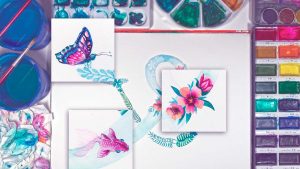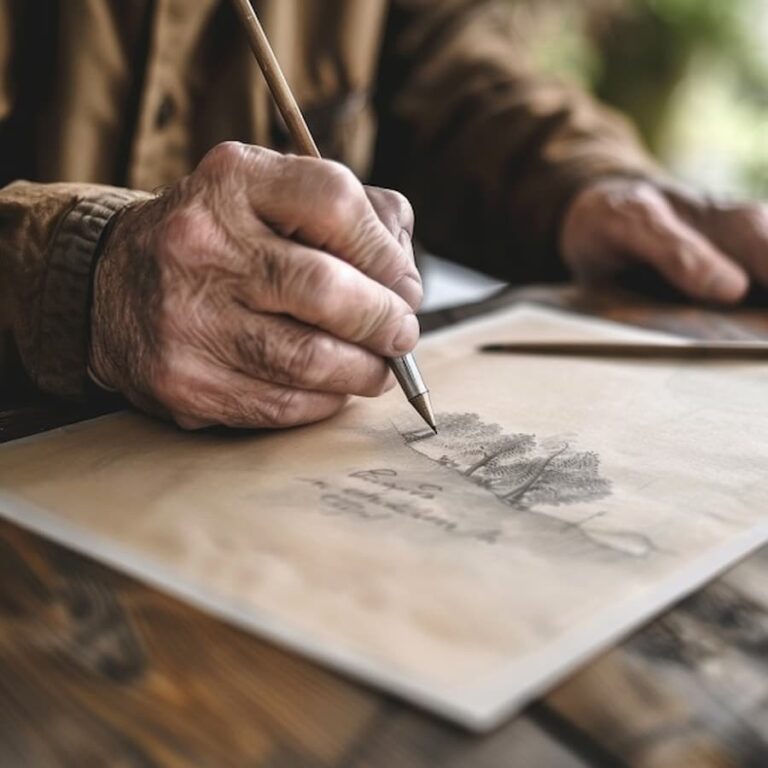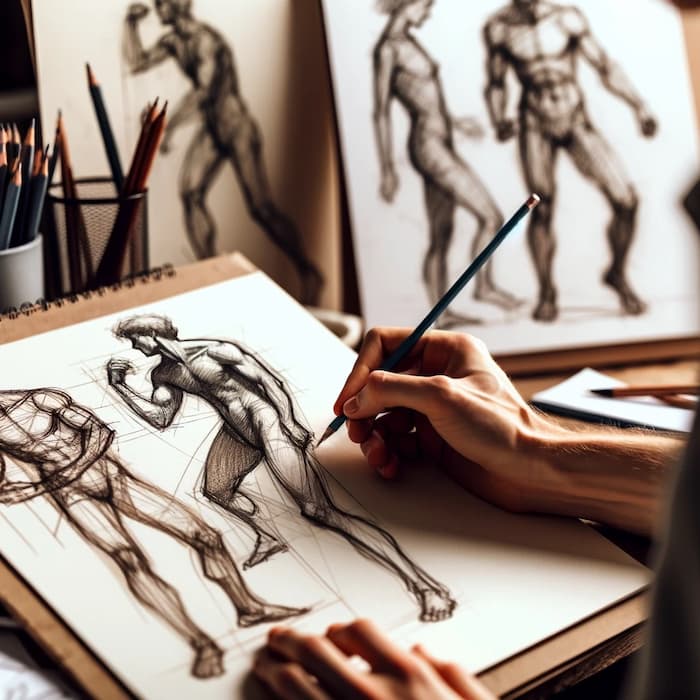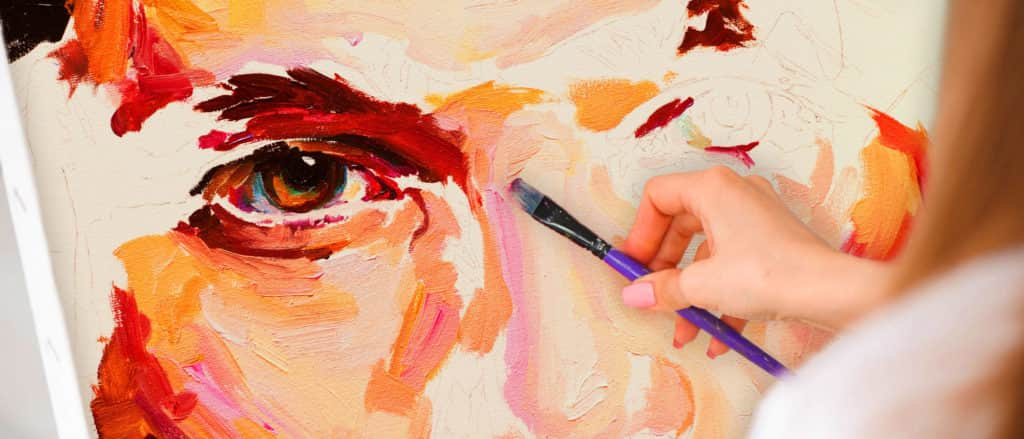In the vast world of painting, two of the most popular mediums among artists and amateurs are gouache and acrylic. Each has its own characteristics, advantages and disadvantages, which make them unique. In this article, we’ll explore 7 key differences between gouache and acrylic, helping you decide which is best for your art projects.
Differences between Gouache and Acrylics
Composition and Pigmentation
Gouache
Gouache is a water-based paint that uses natural or synthetic pigments mixed with gum arabic as a binder. The main characteristic of gouache is its high concentration of pigments, which gives it exceptional opacity. This means that gouache completely covers the lower layers of paint, allowing for a denser application and a matte finish.
Acrylic
Acrylic paint, on the other hand, is composed of pigments suspended in an acrylic polymer emulsion. Acrylics are known for their gloss and water resistance once dry. The versatility of acrylics allows them to be used on a variety of surfaces and techniques, from thin, transparent layers to thick applications that mimic the texture of oil.
Drying Time
Gouache
The drying time of gouache is relatively fast, which can be an advantage or a disadvantage depending on the context. It dries in a matter of minutes, allowing you to work quickly. However, this also means that gouache does not allow as much time for mixing colors on the canvas, which can be limiting for techniques that require smooth gradations.
Acrylic
Acrylics also dry quickly, but not as fast as gouache. They dry to the touch in about 10-20 minutes depending on layer thickness and environmental conditions. This offers a little more flexibility for working and mixing colors directly on the surface, but is still fast compared to mediums such as oil.
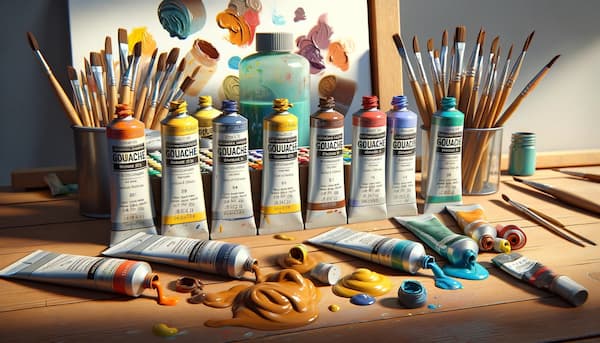
Flexibility and Versatility
Gouache
Gouache is very popular with illustrators and designers because of its ability to create flat, opaque areas of color. It is ideal for work that requires precision and detail, such as technical illustrations and graphic design. However, its opacity can be a challenge for techniques that require transparency or multiple layers.
Acrylic
Acrylic paint is extremely versatile. It can be thinned with water to create watercolor effects or applied in thick layers for impasto techniques. In addition, acrylics can adhere to a wide range of surfaces, including paper, canvas, wood and plastic, making them ideal for mixed media and experimental projects.
Finish and Texture
Gouache
Gouache provides a smooth, matte finish. This characteristic is especially appreciated in illustration and design work where a uniform, professional look is needed. However, the texture may be less appealing to those seeking three-dimensional visual effects.
Acrylic
Acrylics, on the other hand, can offer a variety of finishes from matte to glossy, depending on the medium used. The texture of acrylics can be easily manipulated, allowing artists to create three-dimensional effects and variations in the surface of the paint.
Painting Reactivation
Gouache
One of the distinctive features of gouache is that it can be reactivated with water even after drying. This allows for corrections and adjustments at any time, but also means that the paint can be accidentally altered if it comes into contact with moisture.
Acrylic
Acrylics, once dry, are permanent and water resistant. This provides durability and stability to the artwork, ensuring that it will not alter with time or exposure to moisture. However, this permanence also means that corrections are more difficult to make.
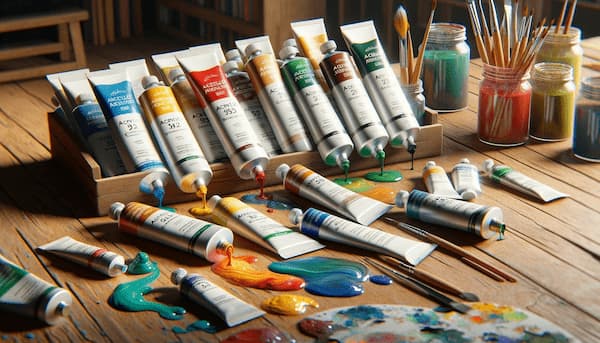
Cost and Availability
Gouache
Gouache tends to be more expensive due to the high concentration of quality pigments. In addition, the availability of specific colors may be limited compared to acrylics. However, its ability to cover large areas with less paint can offset the initial cost.
Acrylic
Acrylics are generally more affordable and are available in a wide range of colors and qualities. From student to professional options, acrylics offer accessibility for all levels of artists.
Common Uses
Gouache
Gouache is widely used in illustration, graphic design and advertising art. Its ability to create areas of solid color and its matte finish make it perfect for work that will be reproduced in prints and publications.
Acrylic
Acrylic paint is popular for fine art, murals and mixed art projects. Its versatility and durability make it a preferred choice for artists who wish to experiment with different techniques and surfaces.
Both gouache and acrylics offer a range of possibilities for artists, and understanding their differences can help you choose the right medium for your projects. At ArteEscuela, we value creativity and artistic expression, and we’re here to help you discover and hone your skills with these amazing materials – explore, experiment and find your own style with gouache and acrylic!
To become a true professional artist in painting and drawing technique, as well as each material, knowing when to use each of them to achieve the desired results, we invite you to visit our Online Course of Painting and Drawingwhere you will learn everything you need to know to become a true artist while discovering and developing your own style.











